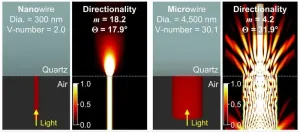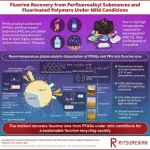(Press-News.org)
Breast cancer (BC) remains one of the most challenging cancers to treat, primarily due to its heterogeneity and propensity for metastasis. The Notch signaling pathway is integral to various cellular processes and has been implicated in the development and progression of BC. NcRNAs, including microRNAs (miRNAs), long non-coding RNAs (lncRNAs), and circular RNAs (circRNAs), have emerged as pivotal regulators of gene expression, affecting cancer biology through their interactions with the Notch pathway.
Non-coding RNAs in Breast Cancer
NcRNAs are transcripts that do not code for proteins but have essential regulatory functions. These include miRNAs, lncRNAs, and circRNAs, each playing unique roles in modulating gene expression and cellular functions. In BC, ncRNAs can function as tumor suppressors or oncogenes, influencing cancer cell proliferation, invasion, and metastasis.
Notch Signaling Pathway
The Notch signaling pathway involves interactions between Notch receptors (Notch1-4) and their ligands, leading to the release of the Notch intracellular domain (NICD) that translocates to the nucleus to regulate gene transcription. Aberrations in this pathway are linked to various BC subtypes. For instance, Notch1, Notch3, and Notch4 are often upregulated in aggressive subtypes like triple-negative breast cancer (TNBC), contributing to poor prognosis.
Regulatory Mechanisms of Non-coding RNAs on Notch Signaling
NcRNAs influence the Notch signaling pathway through several mechanisms. MiRNAs can directly target mRNAs encoding Notch receptors or ligands, thereby modulating pathway activity. LncRNAs can act as molecular sponges, sequestering miRNAs and preventing them from repressing target mRNAs, which leads to changes in Notch signaling. CircRNAs also function similarly by binding to miRNAs, thus impacting the pathway indirectly.
MicroRNAs (miRNAs)
MiRNAs are small, approximately 22-nucleotide-long RNAs that regulate gene expression post-transcriptionally. Specific miRNAs, such as miR-34a and miR-200 family, are known to target components of the Notch pathway, thus influencing BC progression. These miRNAs can suppress the expression of Notch receptors or ligands, thereby inhibiting pathway activation and reducing tumor growth and metastasis.
Long Non-coding RNAs (lncRNAs)
LncRNAs are longer transcripts that can regulate gene expression at various levels, including chromatin modification, transcription, and post-transcriptional processing. In BC, lncRNAs such as MALAT1 and HOTAIR have been shown to modulate the Notch signaling pathway, either by acting as scaffolds for the assembly of protein complexes that regulate Notch target gene transcription or by sponging miRNAs that target Notch pathway components.
Circular RNAs (circRNAs)
CircRNAs are a class of ncRNAs formed by back-splicing events, creating covalently closed loop structures. These molecules can act as miRNA sponges, modulating the availability of miRNAs to target mRNAs. For example, circRNA CDR1as has been shown to sequester miR-7, which in turn regulates Notch signaling and impacts BC cell proliferation and invasion.
Clinical Implications
Understanding the interactions between ncRNAs and the Notch signaling pathway offers promising avenues for BC diagnosis and therapy. NcRNAs can serve as biomarkers for BC subtypes, prognosis, and treatment responses. Therapeutically, targeting ncRNAs or their interactions with the Notch pathway components could enhance the efficacy of existing treatments and lead to the development of novel therapeutic strategies. For instance, ncRNA-based therapies could be designed to restore the normal function of tumor suppressor miRNAs or inhibit oncogenic lncRNAs and circRNAs, thereby modulating the Notch pathway to inhibit tumor growth and metastasis.
Conclusions
NcRNAs play a crucial role in the regulation of the Notch signaling pathway in BC. By understanding these regulatory mechanisms, researchers can develop better diagnostic tools and therapeutic strategies to manage BC more effectively. Continued research into the ncRNA-Notch pathway interactions will likely yield significant advancements in BC treatment and patient outcomes.
This comprehensive review underscores the importance of ncRNAs in BC and their potential as therapeutic targets, paving the way for innovative treatments that could significantly impact patient care and prognosis.
Full text
https://www.xiahepublishing.com/1555-3884/GE-2023-00084
The study was recently published in the Gene Expression.
Gene Expression (GE) is an open-access journal. It was launched in 1991 by Chicago Medical School Press, and transferred to Cognizant Communication Corporation in 1994. From August 2022, GE is published by Xia & He Publishing Inc.
GE publishes peer-reviewed and high-quality original articles, reviews, editorials, commentaries, and opinions on its primary research topics including cell biology, molecular biology, genes, and genetics, especially on the cellular and molecular mechanisms of human diseases.
GE has been indexed in Medline (1991-2021), Scopus, Biological Abstracts, Biosis Previews, ProQuest, etc.
Follow us on X: @xiahepublishing
Follow us on LinkedIn: Xia & He Publishing Inc.
END
Since the laser was invented in the 1960s, scientists have been working to increase lasers’ peak power and to design machines producing coherent light at progressively shorter wavelengths that can improve image resolution and enable probing of quantum nuclear states.
Progress has been made with regard to peak power, most notably with the invention of chirped pulse amplification by University of Rochester researchers in the 1980s, a breakthrough that garnered the Nobel Prize in Physics in 2018. However, developing ...
A new antibiotic that works by disrupting two different cellular targets would make it 100 million times more difficult for bacteria to evolve resistance, according to new research from the University of Illinois Chicago.
For a new paper in Nature Chemical Biology, researchers probed how a class of synthetic drugs called macrolones disrupt bacterial cell function to fight infectious diseases. Their experiments demonstrate that macrolones can work two different ways – either by interfering with protein production or corrupting DNA structure.
Because bacteria would need to implement ...
LA JOLLA (July 23, 2024)—Salk Professor Janelle Ayres has been selected as a 2024 Howard Hughes Medical Institute (HHMI) Investigator. The HHMI Investigators program awards established scientists with approximately $9 million in funding over seven years to pursue boundary-breaking research in their field. The honor recognizes her influential work in immunology and microbiology and its applications to the global crisis of antibiotic resistance.
Ayres is among 26 other 2024 selectees, who will join more than 250 standing Investigators—including Salk Professors ...
INDIANAPOLIS -- The National Library of Medicine has awarded Regenstrief Institute a five-year, $5 million contract extension to ensure the continued maintenance, expansion and public distribution of LOINC®, a global standard for health terminology. The NLM issued its initial contract to support the creation and development of LOINC in 1999. With this extension, NLM's commitment to LOINC will reach 30 years by the time the award expires in 2029.
“The NLM’s continued support of LOINC demonstrates the value the standard delivers to patients, care providers, health ...
Dr. Jaeyeon Pyo’s team at the Korea Electrotechnology Research Institute (KERI) has become the first in the world to reveal light emission patterns from 3D-printed nanowires, which has been published as a cover article in the prestigious scientific journal ACS Nano.
The higher resolution in display devices signifies the more of pixels in a given screen size. As pixel density increases, movies and images are displayed with greater precision and detail. In this regard, ongoing research aims to fabricate ...
The Howard Hughes Medical Institute announced on July 23, 2024 that 26 of the nation’s leading scientists have been named HHMI Investigators.
Paving the way for new scientific and biomedical discoveries in fields ranging from neuroscience to immunology to structural biology, these scientists come from 19 US institutions and join HHMI’s current Investigator community, comprising more than 250 scientists.
HHMI will invest more than $300 million in this newest cohort over the next seven years, enabling each Investigator to push the boundaries of science.
“HHMI is committed to supporting visionary scientists who are pursuing discoveries that will change ...
High blood pressure is known to increase a person’s chances of having a stroke.
But a study led by Michigan Medicine narrows in on the cumulative effects of years of high systolic blood pressure — the top number on the blood pressure reading and how hard the heart pumps blood to the arteries — finding that a higher average reading during adulthood is linked with a greater risk for the two most common types of stroke.
The study, published in JAMA Network Open, analyzed the average systolic blood pressure years ahead of the first stroke for more than 40,000 people ...
IMDEA Software researchers Facundo Molina, Juan Manuel Copia and Alessandra Gorla present FIXCHECK, a novel approach to improve patch fix analysis that combines static analysis, randomized testing and large language models. Their innovations, embodied in the paper: "Improving Patch Correctness Analysis via Random Testing and Large Language Models" were presented at the International Conference on Software Testing, Verification and Validation (ICST 2024).
Context
Generating patches that fix software defects is a crucial task in the maintenance of software systems. Typically, software ...
A study of volatile organic compounds (VOCs) emitted by new cars on hot summer days finds concerning levels of formaldehyde and other aldehydes. Consumers are familiar with—and even drawn to—the “new car smell” produced as VOCs from carpets, upholstery, and other interior materials in newly manufactured passenger vehicles. These VOCs can cause a range of health effects, including headaches, inflammation of the eyes, nose and throat, fatigue, irritability, dry cough, lung disease, and disorientation. Jianyin Xiong, Shaodan Huang, and colleagues sought to capture the levels of VOCs in the passenger cabins of new cars on ...
Perfluoroalkyl substances (PFASs), nicknamed ‘forever chemicals,’ pose a growing environmental and health threat. Since the invention of Teflon in 1938, PFASs and perfluorinated polymers or PFs have been widely used for their exceptional stability and resistance to water and heat. These properties made them ideal for countless applications, from cookware and clothing to firefighting foam. However, this very stability has become a major problem. PFASs do not easily break down in the environment, leading ...



